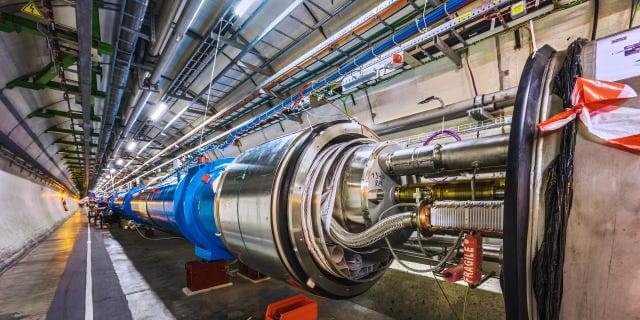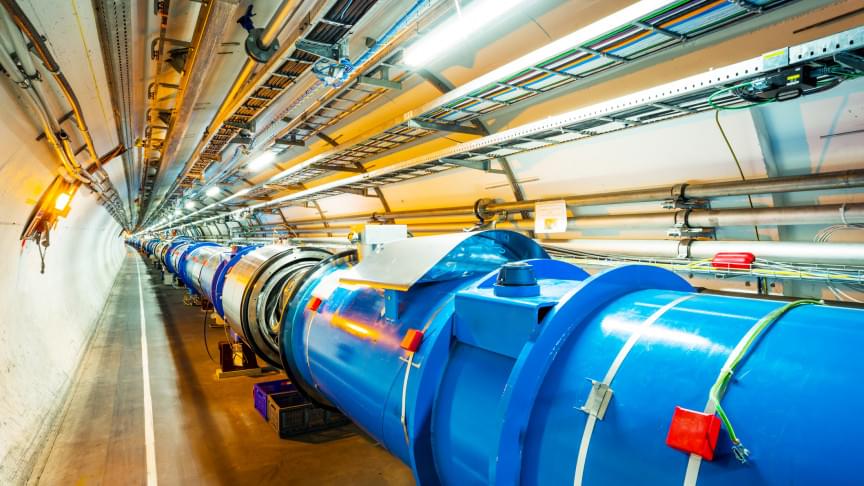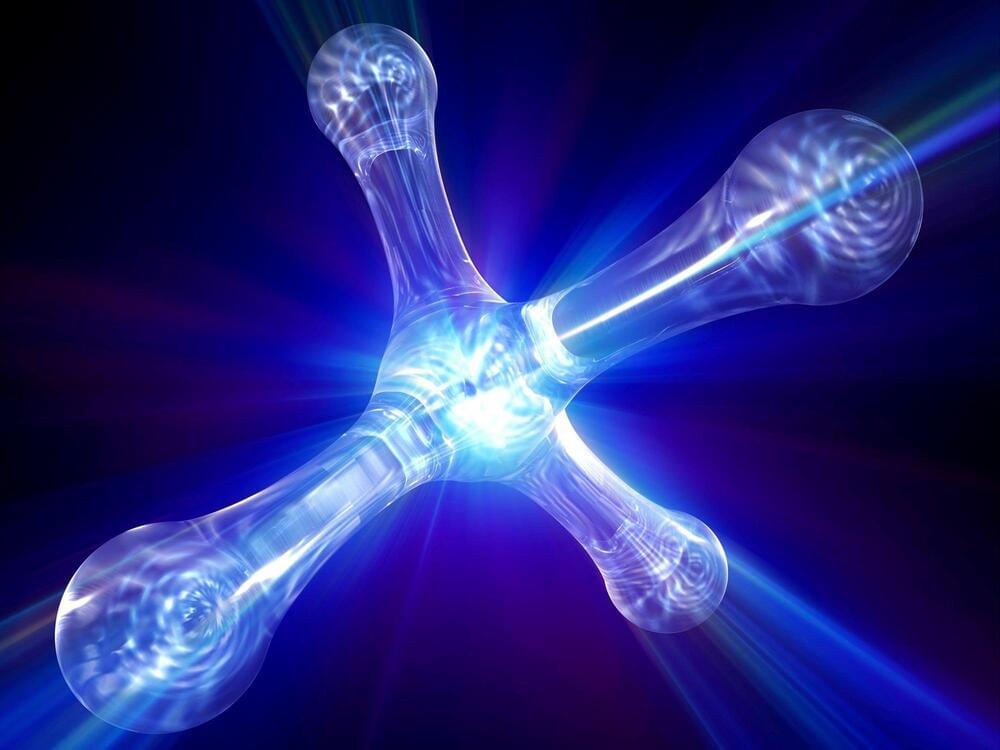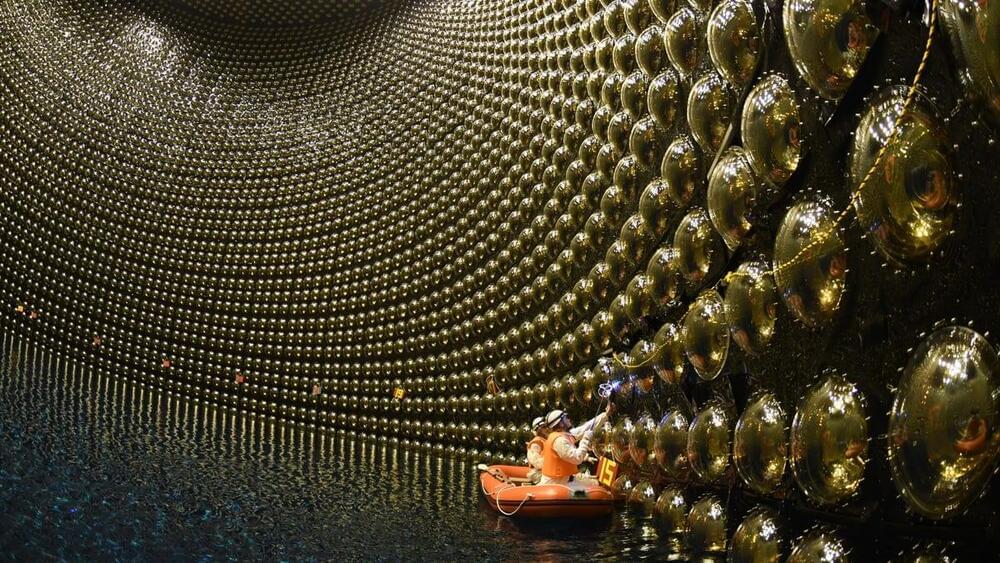Archive for the ‘particle physics’ category: Page 162
Apr 29, 2022
A clock beats inside the heart of every atom
Posted by Genevieve Klien in categories: mobile phones, particle physics, transportation
In the pre-industrial age, people only needed to measure years and months to a fair amount of accuracy. The position of the sun in the sky was good enough to break up the day. Timing at the level of fractions of a second was simply not needed.
Eventually, modern industry arose. Fast-moving machines came to dominate human activity, and clocks required hands that could measure seconds. In the current era of digital technology, the timing of electronic circuitry means that millionths or billionths of a second actually matter. None of the high-tech stuff we need, from our phones to our cars, can be controlled or manipulated if we cannot keep close track of it. To make technology work, we need clocks that are faster than the timing of the machines we need to control. For today’s technology, that means we must be able to measure seconds, milliseconds, or even nanoseconds with astonishing accuracy.
Every timekeeping device works via a version of a pendulum. Something must swing back and forth to beat out a basic unit of time. Mechanical clocks used gears and springs. But metal changes shape as it heats or cools, and friction wears down mechanical parts. All of this limits the accuracy of these timekeeping machines. As the speed of human culture climbed higher, it demanded a kind of hyper-fast pendulum that would never wear down.
Apr 29, 2022
From seawater to drinking water, with the push of a button
Posted by Dan Breeden in categories: mobile phones, particle physics, solar power, sustainability
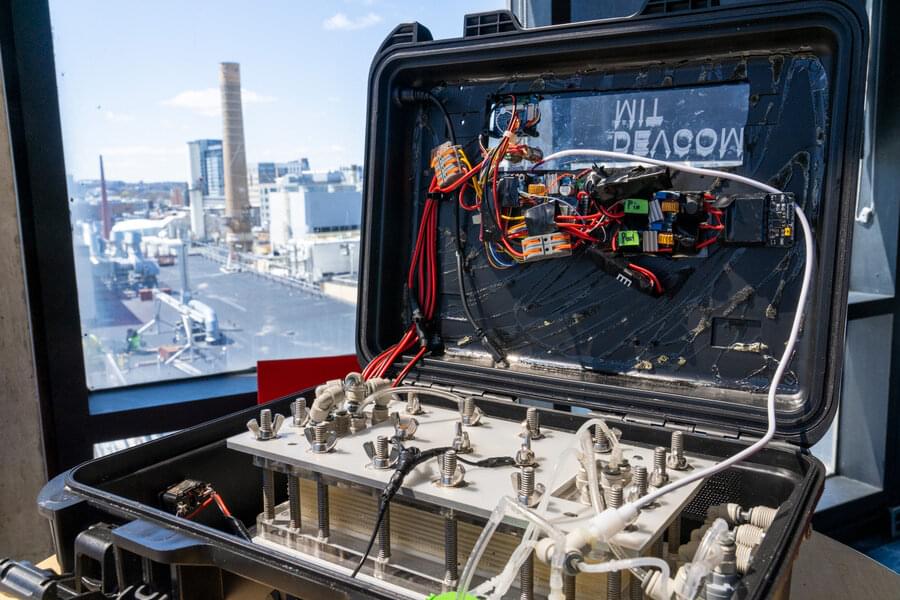
MIT researchers have developed a portable desalination unit, weighing less than 10 kilograms, that can remove particles and salts to generate drinking water.
The suitcase-sized device, which requires less power to operate than a cell phone charger, can also be driven by a small, portable solar panel, which can be purchased online for around $50. It automatically generates drinking water that exceeds World Health Organization quality standards. The technology is packaged into a user-friendly device that runs with the push of one button.
Continue reading “From seawater to drinking water, with the push of a button” »
Apr 26, 2022
Microrobot collectives display versatile movement patterns
Posted by Jose Ruben Rodriguez Fuentes in categories: particle physics, robotics/AI
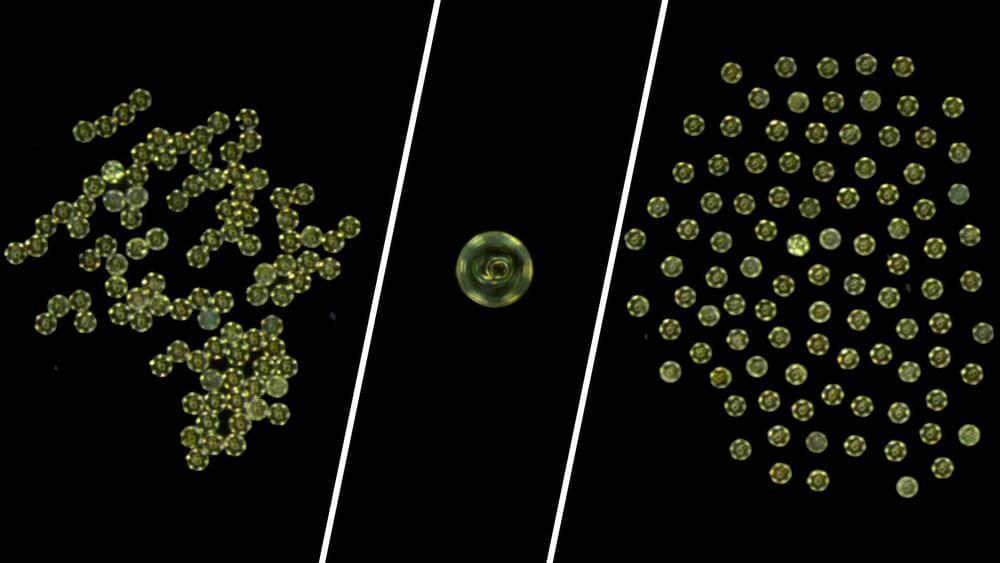
Researchers at the Max Planck Institute for Intelligent Systems (MPI-IS), Cornell University and Shanghai Jiao Tong University have developed collectives of microrobots which can move in any desired formation. The miniature particles are capable of reconfiguring their swarm behavior quickly and robustly. Floating on the surface of water, the versatile microrobotic disks can go round in circles, dance the boogie, bunch up into a clump, spread out like gas or form a straight line like beads on a string.
Each robot is slightly bigger than a hair’s width. They are 3D printed using a polymer and then coated with a thin top layer of cobalt. Thanks to the metal the microrobots become miniature magnets. Meanwhile, wire coils which create a magnetic field when electricity flows through them surround the setup. The magnetic field allows the particles to be precisely steered around a one-centimeter-wide pool of water. When they form a line, for instance, the researchers can move the robots in such a way that they “write” letters in the water. The research project of Gaurav Gardi and Prof. Metin Sitti from MPI-IS, Steven Ceron and Prof. Kirstin Petersen from Cornell University and Prof. Wendong Wang from Shanghai Jiao Tong University titled “Microrobot Collectives with Reconfigurable Morphologies, Behaviors, and Functions” was published in Nature Communications on April 26, 2022.
Apr 26, 2022
The Large Hadron Collider Is Back and Ready to Hunt for Dark Matter
Posted by Melvin Louis in categories: cosmology, particle physics
Are you ready?
In the control room at CERN (The European Center for Nuclear Research) is a row of empty champagne bottles. Scientists popped open each one to celebrate a successful landmark, like the discovery of the Higgs boson particle, the long-elusive particle that gives all other subatomic particles their mass.
⚛️ Science explains the world around us. We’ll help you unravel its mysteries.
Continue reading “The Large Hadron Collider Is Back and Ready to Hunt for Dark Matter” »
Apr 26, 2022
Chip startups using light instead of wires gaining speed and investments
Posted by Shubham Ghosh Roy in categories: computing, engineering, particle physics
April 26 (Reuters) — Computers using light rather than electric currents for processing, only years ago seen as research projects, are gaining traction and startups that have solved the engineering challenge of using photons in chips are getting big funding.
In the latest example, Ayar Labs, a startup developing this technology called silicon photonics, said on Tuesday it had raised $130 million from investors including chip giant Nvidia Corp (NVDA.O).
While the transistor-based silicon chip has increased computing power exponentially over past decades as transistors have reached the width of several atoms, shrinking them further is challenging. Not only is it hard to make something so miniscule, but as they get smaller, signals can bleed between them.
Apr 25, 2022
After 3 years offline, the Large Hadron Collider immediately sets a world record
Posted by Shubham Ghosh Roy in category: particle physics
The Large Hadron Collider. xenotar/iStock
Whoosh!
After three years of maintenance and upgrades, the Large Hadron Collider — one of the most powerful scientific instruments ever built — has whizzed past its own record. In preparation for its third major run of experiments, the particle accelerator has created the most energetic beams of protons ever made by humans. The particles went racing around the 17-mile (27 km) tunnel near Geneva, Switzerland, with an energy of 6.8 trillion electronvolts (TeV).
Apr 25, 2022
A Decade of Science and Trillions of Collisions Show the W Boson Is More Massive Than Expected — A Physicist Explains What It Means
Posted by Shubham Ghosh Roy in categories: particle physics, science
“You can do it quickly, you can do it cheaply, or you can do it right. We did it right.” These were some of David Toback opening remarks when the leader of Fermilab’s Collider Detector unveiled the results of a decade-long experiment to measure the mass of a particle known as the W boson.
I am a high energy particle physicist, and I am part of the team of hundreds of scientists that built and ran the Collider Detector at Fermilab in Illinois – known as CDF.
After trillions of collisions and years of data collection and number crunching, the CDF team found that the W boson has slightly more mass than expected. Though the discrepancy is tiny, the results, described in a paper published in the journal Science on April 7, 2022, have electrified the particle physics world. If the measurement is indeed correct, it is yet another strong signal that there are missing pieces to the physics puzzle of how the universe works.
Apr 25, 2022
What Is a Neutrino? The Missing Key to Modern Physics Could Be a Ghost Particle
Posted by Shubham Ghosh Roy in category: particle physics
Explaining one of astrophysics’ most puzzling particles.
The enigmatic saga of one of astrophysics’ most wanted particles.
Apr 25, 2022
The Arrow of Time in Causal Networks
Posted by Dan Kummer in categories: cosmology, particle physics, quantum physics

April, 2022
Sean Carroll (Caltech and Santa Fe Institute)
https://simons.berkeley.edu/events/causality-program-externa…-institute.
Causality.


